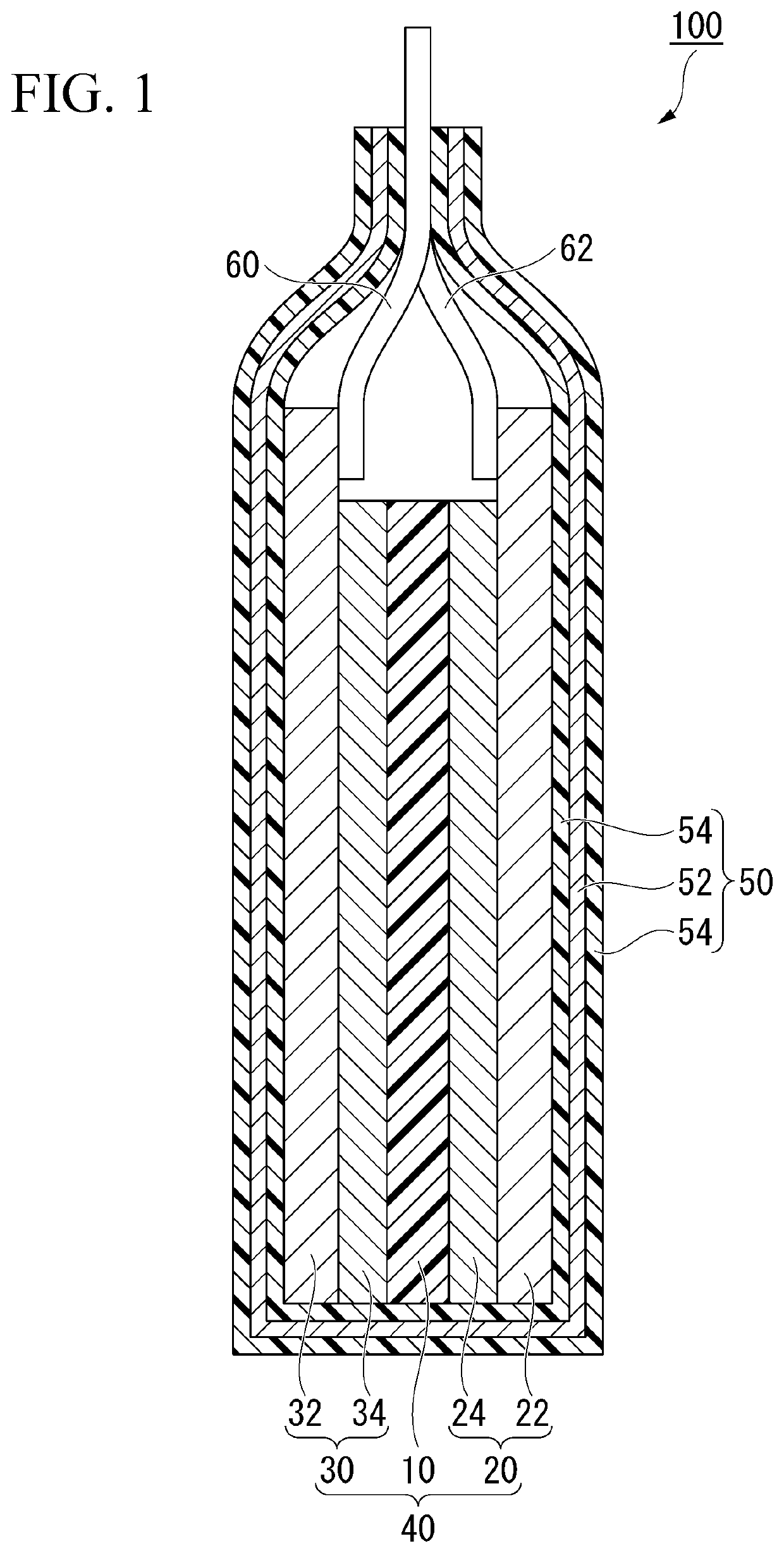Negative electrode and lithium ion secondary battery
a secondary battery and negative electrode technology, applied in the direction of active material electrodes, cell components, electrical equipment, etc., can solve the problems of oxidation/reduction reaction likely to be non-uniform, deposition becomes more prominent in the region where the reaction proceeds excessively, and capacity deterioration
- Summary
- Abstract
- Description
- Claims
- Application Information
AI Technical Summary
Benefits of technology
Problems solved by technology
Method used
Image
Examples
example
Example 1
[0210]The negative electrode of Example 1 was produced by the following the steps A1 to A9.
[0211]Step A1
[0212]A negative electrode active material, a binder, and a solvent were mixed to prepare negative electrode mixture slurries A and B, respectively. The negative electrode mixture slurry A contains 98% by mass of a negative electrode active material, 1% by mass of a binder and 1% by mass of a solvent, and the negative electrode mixture slurry B contains 97% by mass of the negative electrode active material, 2% by mass of the binder and 1% by mass of the solvent. As the negative electrode active material in the negative electrode mixture slurries A and B, a natural graphite material for a lithium ion secondary battery was used. Further, a mixture of CMC as a thickener and SBR in a mass ratio of 1:1 was used as a binder. Water was used as a solvent. Separately, a 1% by mass solution of triphenyl phosphite as a phosphorus compound was added to the negative electrode mixture ...
example 2
[0243]A negative electrode was prepared in the same manner as in Example 1 except that in the step A2, a slurry prepared by mixing 40% by mass of the slurry A produced in the step A1 and 60% by mass of the slurry B produced in the step A1 was applied to the negative electrode current collector 32, so as to form a portion advanced by (⅙) L from the center between the first side and the second side toward the first side and the second side.
[0244]The ratio (P1 / P2) of the phosphorus content (P1) in the central portion 341 to the average phosphorus content (P2) in the first end portion 342 and the second end portion 343 was 1.16. The cycle characteristics after 1000 cycles were 85.5%.
[0245]The ratio (P1 / P3-1) of the phosphorus content (P1) to the phosphorus content (P3-1) at a first arbitrary point in the first end portion 342 and the second end portion 343 was 1.23. The ratio (P1 / P3-2) of the phosphorus content (P1) to the phosphorus content (P3-2) at a second arbitrary point in the fir...
example 3
[0246]A negative electrode was prepared in the same manner as in Example 1 except that in the step A2, a slurry prepared by mixing 33% by mass of the slurry A produced in the step A1 and 67% by mass of the slurry B produced in the step A1 was applied to the negative electrode current collector 32, so as to form a portion advanced by (⅙) L from the center between the first side and the second side toward the first side and the second side.
[0247]The ratio (P1 / P2) of the phosphorus content (P1) in the central portion 341 to the average phosphorus content (P2) in the first end portion 342 and the second end portion 343 was 1.24. The cycle characteristics after 1000 cycles were 85.1%.
[0248]The ratio (P1 / P3-1) of the phosphorus content (P1) to the phosphorus content (P3-1) at a first arbitrary point in the first end portion 342 and the second end portion 343 was 1.22. The ratio (P1 / P3-2) of the phosphorus content (P1) to the phosphorus content (P3-2) at a second arbitrary point in the fir...
PUM
| Property | Measurement | Unit |
|---|---|---|
| water content | aaaaa | aaaaa |
| water content | aaaaa | aaaaa |
| water content | aaaaa | aaaaa |
Abstract
Description
Claims
Application Information
 Login to View More
Login to View More - R&D
- Intellectual Property
- Life Sciences
- Materials
- Tech Scout
- Unparalleled Data Quality
- Higher Quality Content
- 60% Fewer Hallucinations
Browse by: Latest US Patents, China's latest patents, Technical Efficacy Thesaurus, Application Domain, Technology Topic, Popular Technical Reports.
© 2025 PatSnap. All rights reserved.Legal|Privacy policy|Modern Slavery Act Transparency Statement|Sitemap|About US| Contact US: help@patsnap.com


